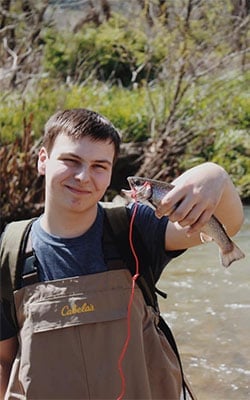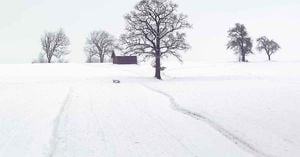The mountains are calling, and I must go! Have you ever visited the NC High Country for a vacation or a weekend getaway and wished you could just stay forever?
While forever maybe a little far-fetched, owning a home in the NC mountains may be the answer to that calling. Whether purchasing a home for a primary residence, a second home, or as an income-producing vacation rental or investment property, there are many things to consider when looking for your mountain home.
Surrounded by the beautiful North Carolina Blue Ridge Mountains, the Blue Ridge Parkway, cool mountain streams, and rivers nearby, quaint towns, rolling hills and pastureland, and of course the cooler temperatures with the fresh mountain breezes.
What more could you want? Right? Let’s look at some of the things that can help you decide where you want to live in the High Country.
How to Decide What Community is Best For You
When vacationing, you may have your favorite places to go and things to do, but there is so much more to the High Country than most people realize. Deciding where to purchase a mountain home can be the easy part while choosing the area that will best meet your wants and needs can be rather overwhelming.
As you explore the different areas that make up the NC High Country there are a few questions that you may want to ask to help you decide what community is best for you. If you are in the market for a second home or vacation property, an RSPS Specialist can help you understand the ins and outs of potential communities during your search.
Some questions to consider when finding a mountain community include:
- How close do you want to be in or near a town for restaurants, shopping, and conveniences?
- How close is the nearest grocery store, gas station, restaurant, coffee shop, pharmacy, hospital, or medical facility?
- What does rural really mean to you?
- Is there a POA or HOA? And if so, what does my fee cover?
- Who will maintain the road your property is on? (State, Private, POA?)
- How much snow should I expect and who will plow my road/driveway?
- Will I need a 4-wheel drive vehicle to access the area where I want to live?
- Are there any restrictions for my property and/or subdivision?
- Do I have to worry about bears or other wildlife?
Before you up and move to a rural community, it’s best to know what to expect before relocating to a more remote area.
7 Counties of the High Country of NC
Did you know that the North Carolina High Country is made up of 7 counties? The High Country of NC encompasses Alleghany, Ashe, Avery, Mitchell, Watauga, Wilkes, and Yancey counties.
However, not all these counties are in the higher elevations, some are in the valleys or foothills of the mountain region. The town of Boone is located in Watauga County and makes up the heart of the High Country. Generally, when most people think about moving or retiring to the mountains they think of Boone, Blowing Rock, or Banner Elk areas to fulfill their mountain dream.
These three towns are often known as the 3 “B’s”. But, just because the 3 “B’s” are the most popular destinations doesn’t mean that they are the right place for you. Get out and explore all 7 counties of the High Country and see which area is calling for you.
Here is an overview of the 7 counties and the towns that make up the High Country of North Carolina.
#1: Alleghany County
Alleghany County includes the small town of Sparta. The town is located in the northwest mountains of NC at an elevation of 2927’. Situated between the Blue Ridge Parkway and the Historic Highway 21, Sparta is home to 1717 residents and has a quaint small-town feel.
In Sparta, you will find local shops and the Alleghany Jubilee venue where you can enjoy Traditional Mountain Music and dancing. You will also find Stone Mountain and the Grayson Highland State Park nearby for your outdoor adventures.
#2: Ashe County
Ashe County is known as one of the largest Christmas Tree producers. Some other towns located in Ashe County include:
- Jefferson and West Jefferson are so close to each other that many people refer to them as “The Jeffersons”. With a combined population of just under 3000 residents and is at an elevation of 3000′. You will find that more of the government offices and medical care are located in Jefferson while West Jefferson’s downtown boasts a renewed charm with local restaurants, breweries, and shops.
- Todd lies on the Watauga and Ashe County line at an elevation of 3000’. Equal distance between Boone and West Jefferson you will find the comforts of a town while feeling away from it all with the New River nearby.
#3: Avery County
Newland is the county seat of Avery County. With an elevation of 3606’, this small rural town is home to 686 residents where everyone knows everyone. Other popular towns include:
- Sugar Mountain is nestled in the middle of the High Country at an elevation of 4432’ with a peak elevation of 5300’. Banner Elk is nearby and Boone is just a short drive away. Sugar Mountain Ski Resort is the main focus for seasonal residents. There are 198 residents that call this village home.
- Linville is known as a summer mountain resort. This mountain community sits at 3665’ in elevation and draws in many summer residents with cooler temperatures and easy access to the Blue Ridge Parkway, Grandfather Mountain, and the Grandfather Mountain Highland Games.
- Banner Elk has an elevation of 3701’ and is one of the more popular areas of the High Country of North Carolina. The town has relatively mild weather in the summer months. With 1149 residents, this small town is a short drive from Boone, Blowing Rock, and Grandfather Mountain State Park. Banner Elk is conveniently located between the 2 ski resorts, Sugar Mountain and Beech Mountain.
#4: Watauga County
Watauga County is home to the popular towns of Boone, Blowing Rock, and Beech Mountain.
Boone – Elevation 3333’
Boone is the largest populated town in the High Country with a population of just under 40,000 people. Approximately 20,000 are full-time residents and the rest is made up of Appalachian State University students.
You will never get bored in Boone with Appalachian State University a part of the community. You will find wonderful opportunities to enjoy concerts, theatre productions, art shows and classes, college-level sporting events and so much more.
Boone is also known for great local restaurants, breweries, and coffee shops. If you are wanting great medical care nearby, Appalachian Regional Health Care systems boast quality medical care at Watauga Medical Center.
While Boone has more of the city life, outdoor adventures are still close by.
Blowing Rock – Elevation 3566’
With a population of 1,315 residents, Blowing Rock is a small town located about 10 minutes south of Boone. Known for its quaint small-town charm, you will find wonderful shops and restaurants along Blowing Rock’s Main St.
Not far from town, you will find the Blue Ridge Parkway and Appalachian Ski Mountain. You can use our guide to Blowing Rock to plan a fun day in Blowing Rock.
Beech Mountain – Elevation 5506’
Beech Mountain, home to 318 residents, its elevation makes it the highest town in North Carolina. If you are an outdoorsy person, ski/snowboard enthusiast or just long to be away from the city life, Beech Mountain may be just the place for you.
#5: Mitchell County
Mitchell County is known for having one of the richest gem and mineral deposits in the world. Some other communities in Mitchell County include:
- Spruce Pine has an elevation of 2559’ and is centered between the peaks of Roan Mountain, Grandfather Mountain, and Mount Mitchell. With a population of 2,125 residents, this small quaint town is in the heart of Mitchell County. You’ll find unique shops, art galleries and local eateries, and the Toe River running through downtown. If you are an art lover, you will feel right at home among the various local artists and their crafts like pottery, woodworking, and glassworks.
- Little Switzerland is named after its resemblance to the Swiss Jura Mountain. The town is just off the Blue Ridge Parkway at an elevation of 3468’. With a small population of 138 residents, it is an unincorporated community with Spruce Pine being the nearest town.
#6: Wilkes County
Wilkes County is another High Country county. Wilkesboro, standing at an elevation of 1047’, is a small town in the foothills of NC often referred to as the “Key to the Blue Ridge” because of its close proximity to the Blue Ridge Mountains. With 3,423 residents, here you will experience the tight nit community rich in Nascar history with a nice mix between rural and suburban areas.
Wilkes County is known for the MerleFest, one of the nation’s most iconic music festivals bringing in famous musicians from around the US. The 1500-acre lake at the Kerr Scott Dam is a great recreation area or a nice place for a lakefront home if you are so lucky.
#7: Yancey County
Yancey County is nestled in the Appalachian Mountains on the Northwestern border of North Carolina and Tennessee. As the county seat of Yancey County, Burnsville sits at an elevation of 2825’.
With a population of 1677’ residents, Burnsville is a small town that boasts an artistic flair with local shops, restaurants, and local art galleries. The Town Square is popular for community gatherings.
3 Commonly Overlooked Aspects of NC Mountain Living
While many folks dream of living the “simple life” in the NC mountains, the reality of mountain living may not be all that they expect. Most people think about the cooler temperatures, the gorgeous views, the peace and tranquility, and the adventures that await.
However, there are 3 commonly overlooked aspects of mountain living.
 #1: Wildlife
#1: Wildlife
There is an abundance of wildlife that you may encounter around the area and even around your mountain home? The High Country is home to deer, raccoon, squirrels, groundhogs, and skunks which are pretty, common around here but try not to cross paths or spook the Skunk!
Other animals that are a little more allusive that you may see are Coyotes, Bobcats, Fox, and yes, Bear! When it comes to bears, they are cute and cuddly looking, but they can be a nuisance if precautions aren’t taken on our part. Bears, as well as other wildlife, love garbage cans full of scraps to eat however, they can destroy the can and scatter trash so it’s important to keep the garbage cans locked up in places that they cannot get to.
Area wildlife also, like bird feeders, and outdoor grills, and don’t think twice about coming up to your porch to get a tasty treat.
Seeing wildlife native to the area for some people is a real treat while for others, it can be frightening. Always, keep in mind that this is their home too so it’s important to learn to appreciate and respect them while enjoying your mountain home.
#2: The Winter Weather
In the High Country, you will experience all 4 seasons – Spring, Summer, Fall, and especially Winter. Cool air with lots of warm sunshine in the spring, warm summer days with low humidity, crisp breezes mixed with colorful leaves in the fall, cold winds, and snow in the winter.
 However, the locals like to say that In the High Country you can experience all 4 seasons in 1 day? That’s what makes living the mountain life so interesting, you never know what to wear- a winter coat and snow boots or a pair of shorts! It doesn’t matter what the weather is, expect the unexpected and enjoy where you live.
However, the locals like to say that In the High Country you can experience all 4 seasons in 1 day? That’s what makes living the mountain life so interesting, you never know what to wear- a winter coat and snow boots or a pair of shorts! It doesn’t matter what the weather is, expect the unexpected and enjoy where you live.
During the winter months, you will need to know how to prepare for the cold and snow before moving here and getting caught off guard. These tips will make it easier for you to winterize your home.
- Invest in a snow shovel, salt, and de-icer for your driveway and walkways.
- Insulate your pipes and turn off your outdoor water valve to keep it from freezing.
- Cover and store your outdoor furniture so it is protected and does not blow away during the winter’s high winds.
- Trim and prune limbs on trees that could break in a heavy snow or ice storm and damage your home or power lines.
- Keep your gutters clean from leaves and debris so that snow and rain can drain away from your home properly.
- Inspect and repair any shingles, flashing, or roof damage before the winter so you will not have to deal with water leaking in after heavy snow.
- Have your chimney inspected and cleaned to keep safe from chimney fires and smoke damage.
- Weatherstrip windows and doors to keep cold air out and prevent heat loss.
Winterization tips might be a little different for vacation rentals compared to year-round residences, so be sure to do your research on how to best help your property before it gets too cold.
#3: Tightknit Communities
In many rural areas, you will find tight-knit communities where many generations of families have lived as long as they can remember. They have a way of life that has served them through the years, and they may be a little reserved when outsiders move in. You can learn a lot from these local communities, but you must remember that they are not looking for a change. Respect their way of life and get to know them, you never know what you will learn.
Everyone is familiar with the Blue Ridge Parkway or the main highways of 221, 321, and 421. Get off the major thoroughfares and drive on the back roads. This is where you will discover some of the most beautiful areas in the rural mountains. However, getting to some of these places may take you on some very curvy and steep mountain roads, some roads may not be paved, and you may need a 4-wheel drive vehicle to pass through.
Relocate With A High Country Realtor
As you consider purchasing a home in the High Country or buying NC mountain land, do your homework and learn about the different areas that make up the NC High Country, and get out and explore.
When you are ready, an 828 Real Estate agent can help you find your perfect mountain home.


